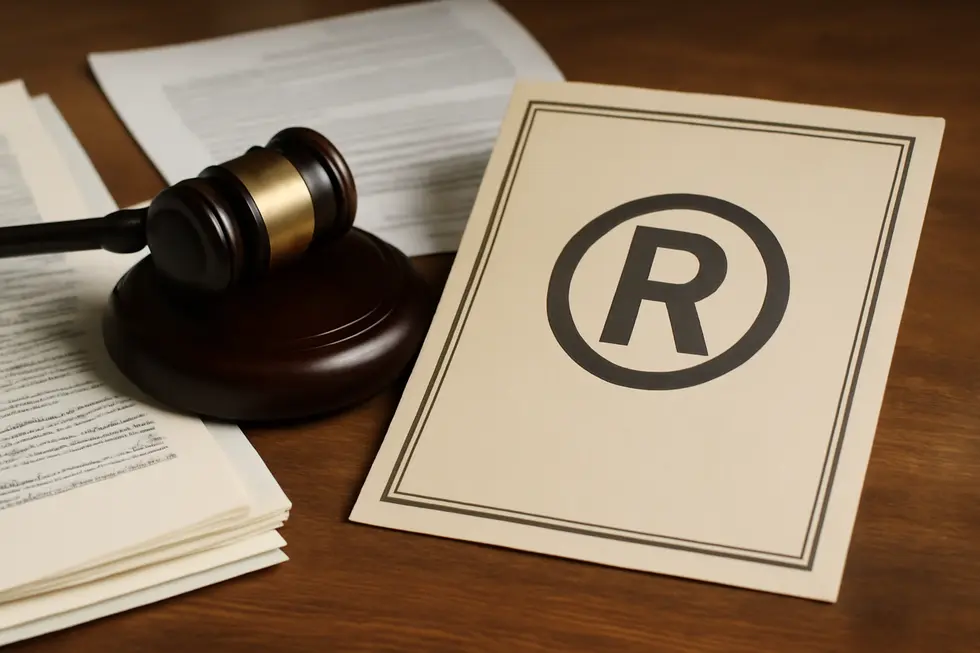Introduction
Service marks are essential identifiers that distinguish your business’s services in a competitive marketplace. They serve as the legal and marketing backbone for businesses providing services rather than tangible products. Understanding what a service mark is, how it differs from trademarks, and the protections it offers is crucial for any business owner aiming to build a trusted brand. This guide breaks down the fundamental concepts of service marks, outlines the legal framework securing them, and highlights their economic and business impact. It also sheds light on their role in modern technology platforms and international contexts, while emphasizing how service marks influence consumer confidence and promote fair competition. Each chapter builds a comprehensive understanding of service marks, equipping business owners with the knowledge needed to leverage and protect this invaluable asset.
Tables of Contents
Chapter 1: Definition and Fundamental Concepts to Define Service Mark
- How Service Marks Identify and Distinguish Services in the Marketplace
- Legal Foundations and Distinctions: How Service Marks Align with Trademark Protection
Chapter 2: Legal Framework and Protection Mechanisms to Define Service Mark
- Navigating Common Law and Federal Registration: Core Legal Protections for Service Marks
- Enforcement Strategies and Comprehensive Protections Safeguarding Service Marks
Chapter 3: Differences Between Define Service Mark and Trademark
- Legal and Conceptual Boundaries: How Service Marks Distinguish from Trademarks
- Understanding How Service Marks and Trademarks Shape Business Identity and Legal Protection
Chapter 4: Economic and Business Importance to Define Service Mark
- How Legal Definition of Service Marks Fuels Business Growth and Market Strength
- Harnessing Service Marks for Brand Identity, Market Edge, and Legal Confidence
Chapter 5: Technological and Geopolitical Aspects to Define Service Mark
- Navigating the Digital Frontier: How Technology and Global Dynamics Shape Service Mark Protection
- Geopolitical Dynamics and Economic Forces Shaping Service Mark Strategy in Technology Sectors
Chapter 6: Societal Role and Consumer Impact to Define Service Mark
- How Service Marks Shape Consumer Trust and Market Clarity as Distinctive Source Identifiers
- The Legal Foundation and Economic Influence Behind Service Marks in Society
Chapter 1: Definition and Fundamental Concepts to Define Service Mark

1. How Service Marks Identify and Distinguish Services in the Marketplace
A service mark functions as the unique identifier for services offered by one entity, setting them apart from others in the marketplace. Unlike trademarks, which apply to tangible products, service marks specifically signal the origin of intangible services such as consulting, dining, or plumbing. This distinction is fundamental because it shapes how businesses protect and promote their brand identities in service-driven industries.
At its core, a service mark can be a word, phrase, symbol, logo, or any distinguishing element that clearly communicates the source of a service offering. It helps consumers recognize and associate a particular level of quality or reputation with a service provider’s brand. To be effective, the mark must be distinctive enough to differentiate a provider’s services from competitors, avoiding consumer confusion about who is responsible for those services.
The principle of identification underpins the very definition of a service mark. The mark acts as a signal, indicating the origin or source of the service. This is crucial in markets saturated with similar services, where the consumer’s trust hinges on clear brand differentiation. Distinctiveness enhances this effect, requiring the mark to be sufficiently unique or descriptive to stand out. This uniqueness not only aids consumer recognition but forms the basis for legal protection.
Service marks gain protection through registration and the application of trademark law, helping prevent misuse or unauthorized replication that could deceive or confuse consumers. This legal protection preserves the link between the mark and the service quality it represents, supporting both fair competition and informed consumer choice.
The essential characteristics—identification of services, distinctiveness among competitors, clear indication of source, and legal safeguarding—combine to define a service mark within intellectual property frameworks. Understanding these facets is key for any business aiming to build a strong, protected brand identity in service sectors.
For a deeper explanation of how service marks differ and examples of their use, explore this detailed service mark example. To expand on legal aspects protecting marks, see the resource on trademark protections for business names and logos.
2. Legal Foundations and Distinctions: How Service Marks Align with Trademark Protection
Service marks serve as essential legal tools that identify and protect the identity of service providers in the marketplace, operating within the broader framework of trademark law. Unlike trademarks, which exclusively cover goods and tangible products, service marks are tailored to intangible offerings such as consulting, dining, plumbing, and other service industries. Although differing in application, service marks and trademarks share similar legal mechanisms and protections designed to safeguard brand identity and prevent consumer confusion.
Legally, the core function of both marks is to signal the origin of the goods or services. This role is indispensable for fostering consumer trust and facilitating informed purchasing decisions. Registering a service mark with the United States Patent and Trademark Office (USPTO) provides the service provider with exclusive nationwide rights to its use in commerce. This registration not only offers legal recognition and the right to use the ® symbol but also simplifies enforcement against infringement by establishing presumptive ownership in legal challenges.
The requirements for a service mark are parallel to those of a trademark. It must be distinctive—whether a word, phrase, logo, slogan, or symbol—and clearly differentiate the services of one provider from another. Importantly, registration mandates proof of actual use or a bona fide intent to use the mark in commerce, ensuring the mark genuinely functions as a source identifier. Legal protection then extends to preventing others from utilizing confusingly similar marks within related service sectors.
Though unregistered service marks enjoy some common law rights based on use, this protection tends to be geographically limited. Federal registration expands this scope nationally and strengthens legal remedies against infringement. Disputes typically hinge on proving priority of use and likelihood of consumer confusion, fundamental concepts shared with trademarks.
In essence, the legal protection afforded to service marks mirrors that of trademarks but is calibrated to the service context. This alignment emphasizes the critical role service marks play in intellectual property law, allowing service enterprises to maintain distinct and protected brand identities in competitive markets.
For further practical insights into service mark registration and protection, refer to this UpCounsel Service Mark Overview.
Chapter 2: Legal Framework and Protection Mechanisms to Define Service Mark

1. Navigating Common Law and Federal Registration: Core Legal Protections for Service Marks
Service marks serve as vital legal tools to protect and distinguish the branding of services, operating within a dual framework of common law rights and federal registration. Common law rights emerge automatically upon the actual use of a distinctive service mark in commerce within a specific geographic area. These rights require no formal registration and offer protection primarily through state courts against consumer confusion and unfair competition. Such protection, however, remains geographically limited to where the mark has established recognition among consumers, and enforcement demands evidence demonstrating the mark’s use and consumer association. Typically, businesses initially rely on these rights for immediate, cost-free protection as they build brand recognition locally.
On the other hand, federal registration through the United States Patent and Trademark Office (USPTO) grants a service mark nationwide protection and significantly stronger legal advantages. To qualify, the mark must be distinctive, used or intended for use in commerce, and cannot be generic or merely descriptive. Upon successful registration, the service provider can use the ® symbol, signaling official federal recognition. This registration establishes presumptive nationwide ownership, simplifying legal remedies against infringement and unauthorized use. The registration process involves comprehensive searches for existing conflicts, a formal application with proof of use or intent, and ongoing maintenance to preserve rights.
Together, these mechanisms complement each other: common law rights provide an immediate but localized shield, whereas federal registration delivers broader and more enforceable protection. This layered approach ensures that a service mark not only benefits from early user rights but can evolve into a robust, federally recognized intellectual property asset. Effective use of both forms of protection supports brand integrity and helps prevent market confusion, enabling service businesses to build trustworthy, defensible identities.
For a deeper understanding of foundational protections under common law trademarks and their significance, consult this resource on common law trademark rights. Further official guidance on the federal registration process is available from the USPTO website.
2. Enforcement Strategies and Comprehensive Protections Safeguarding Service Marks
The enforcement and protection of a service mark hinge fundamentally on a robust legal framework designed to secure exclusive rights for service providers. Registration through the United States Patent and Trademark Office (USPTO) stands as the primary avenue for obtaining nationwide protection. This registration confers a presumption of ownership and exclusive rights, empowering the mark owner to prevent unauthorized use that could cause consumer confusion. The mark owner can enforce these rights through federal court litigation, leveraging the ® symbol as notice of federally backed protection. Additionally, registering a service mark enables the owner to work with U.S. Customs and Border Protection to block counterfeit or infringing goods linked to the mark from entering the country, thereby extending protection beyond traditional commerce boundaries.
However, protection also stems from common law rights, which accrue through actual use of a service mark in commerce, even without registration. Common law rights afford limited geographic scope and weaker enforcement mechanisms but remain a critical foundation, especially for newly established service brands. To qualify for registration and hence stronger protection, a service mark must meet the distinctiveness criterion, distinguishing the service source clearly to help consumers avoid confusion. Marks that are generic or merely descriptive without demonstrating acquired distinctiveness typically face registration challenges.
Pre-registration searches play an essential role in preventing conflicts by identifying existing marks that may pose obstacles. Beyond the mark itself, certain service features can benefit from trade dress protection, which safeguards the overall visual presentation or “look and feel” of a service environment, enhancing brand identity.
Maintaining a service mark demands vigilance, including periodic renewal filings approximately every ten years to sustain legal protections. On an international scale, while service marks are inherently national rights, treaties like the Madrid Protocol simplify mark registration in multiple countries, enabling broader protection for global service enterprises without a singular global registration system.
Together, these enforcement and protection mechanisms constitute a comprehensive shield for service marks, supporting brand integrity and allowing service providers to assert legal rights confidently. For more insight, see the USPTO resource on service mark registration and explore detailed guidance on common law trademark protection.
Chapter 3: Differences Between Define Service Mark and Trademark

1. Legal and Conceptual Boundaries: How Service Marks Distinguish from Trademarks
Legal and Conceptual Boundaries: How Service Marks Distinguish from Trademarks
Service marks and trademarks both serve the essential role of identifying the origin of commerce, yet they differ primarily in the nature of what they protect. A trademark is traditionally associated with tangible goods—a physical product that a business creates or sells. It could be a distinctive word, logo, symbol, or phrase that consumers use to recognize a product’s source. For example, a unique logo on manufactured shoes would be safeguarded under trademark law.
In contrast, service marks specifically protect intangible offerings—the services a business delivers rather than physical objects. These could range from hospitality, consulting, maintenance, to digital services. The purpose is to signify the source of these services to consumers, fostering brand recognition and trust in service quality. For instance, a distinctive phrase or logo representing a dining or repair service qualifies as a service mark.
Legally, both protection types are registered through the United States Patent and Trademark Office (USPTO), conferring similar exclusive rights nationwide. Once registered, both marks allow owners to use the ® symbol, signaling federal protection against infringement. However, the key distinction lies in the scope: trademarks cover products, while service marks apply to services. Businesses offering both products and services often secure protection for each category separately, owning both trademarks and service marks.
Despite their different domains, their core commercial function aligns—preventing consumer confusion and ensuring that the unique identity connected to a product or service remains protected. This distinction is critical as it shapes how intellectual property rights are applied and enforced across industries. Service marks emphasize protecting the goodwill tied to the experience or outcome a service provides rather than a physical good’s branding.
Understanding these nuances clarifies legal strategy for brand protection and supports accurate application in commerce, reflecting the intertwined relationship between trademarks and service marks. For an expanded exploration of trademark protection, visit trademark protection for business name and logo.
2. Understanding How Service Marks and Trademarks Shape Business Identity and Legal Protection
Service marks and trademarks are vital tools for businesses aiming to establish a unique identity, but their fundamental difference lies in what they identify: service marks protect services, while trademarks protect tangible products. This distinction deeply influences their practical use and legal implications for enterprises.
A trademark typically encompasses any word, phrase, symbol, or logo that identifies and distinguishes goods sold by a company. It assures consumers of the origin and consistent quality of physical products. Conversely, a service mark serves the identical function but in the service industry context, signaling to consumers the source of intangible offerings such as consulting, dining, or repair services. For example, a unique logo linked to a delivery service identifies that service’s provider rather than a product.
Both marks offer legal safeguards against unauthorized use. Securing registration through the United States Patent and Trademark Office (USPTO) strengthens these protections, granting nationwide rights, providing constructive notice, and allowing legal recourse in federal courts against infringement. Companies offering both goods and services often hold trademark and service mark registrations simultaneously to fully protect their brand portfolio.
The strategic benefits extend beyond protection: registered marks foster customer loyalty, enable efficient marketing, create valuable intangible assets, and facilitate market expansion—including internationally through agreements like the Madrid Protocol. On the other hand, neglecting to register or differentiate between trademarks and service marks can expose a business to legal challenges, consumer confusion, and dilution of brand equity.
In essence, understanding and appropriately applying service marks and trademarks is crucial for any business aiming to maintain a strong, legally protected brand in today’s competitive marketplace. For more about trademark safeguards, businesses can consult resources on trademark protection for business names and logos.
Chapter 4: Economic and Business Importance to Define Service Mark

1. How Legal Definition of Service Marks Fuels Business Growth and Market Strength
Defining and registering a service mark provides a critical legal foundation that empowers businesses to protect their brand identity uniquely tied to services offered. This exclusive legal right guards against unauthorized use, ensuring that competitors cannot dilute or imitate the mark, which could confuse consumers about the source and quality of a service. This protection creates a clear boundary around the service brand, fostering consumer confidence through consistent recognition and trust in what the service promises.
Economically, the benefits of defining a service mark extend far beyond mere legal protection. It establishes the mark as a valuable intangible asset that can increase the overall market valuation of the business. With a registered service mark, companies can leverage licensing agreements to expand revenue without losing ownership, presenting lucrative opportunities to monetize the brand in new ways. Furthermore, a recognized mark lowers barriers when entering new markets, both domestically and internationally, by carrying an established reputation that facilitates easier consumer acceptance and competitive advantage.
This legal-economic synergy also supports innovation and quality maintenance. Businesses are motivated to uphold high standards since their brand identity, legally protected under trademark law, reflects their market reputation and customer expectations. Well-defined service marks don’t just prevent infringement; they actively encourage brand development and strategic partnerships that fuel sustainable economic expansion.
For example, clear statutory frameworks such as the Lanham Act in the United States centralize protections for service marks, providing streamlined enforcement mechanisms that simplify legal recourse and strengthen market positions. The commitment to defining service marks firmly within trademark law transforms them into strategic tools that underpin long-term business growth and market integrity.
For more detailed insights on protecting business identities legally, visit trademark protection business name logo. Additionally, authoritative legal frameworks like the Lanham Act exemplify how legislation effectively supports these economic incentives.
2. Harnessing Service Marks for Brand Identity, Market Edge, and Legal Confidence
Defining and officially registering a service mark delivers profound strategic advantages for businesses offering services. Unlike general branding efforts, a service mark—be it a name, phrase, logo, or symbol—serves as a legally protected badge that distinguishes a company’s service offerings from those of competitors. This protection is essential not only for maintaining distinctive brand identity but also for safeguarding the company’s market position from imitators and unauthorized users that could dilute brand equity or confuse customers.
By securing exclusive nationwide rights through registration, service providers gain robust enforcement powers against infringement that exceed what unregistered common law rights offer. This legal exclusivity preserves the integrity of the brand, ensuring that consumers associate quality, reliability, and authenticity specifically with the protected service mark. The mark therefore becomes a pivotal asset in building emotional connections with customers, setting a company apart even in saturated markets.
More than a symbol of differentiation, registered service marks facilitate various commercial expansions. They attract franchising and licensing opportunities, underpin partnership confidence, and smooth entry into new or global markets by leveraging a recognized and trusted identity. The right to use the ® symbol further amplifies business credibility, deterring competitors from unauthorized imitation and reassuring consumers and collaborators alike.
Service marks have a vital role across diverse industries such as hospitality, consulting, and finance. With approximately 35% of international trademark applications dedicated to service marks, their importance on a worldwide scale is clear. They not only protect business interests but also sustain healthy competition and consumer trust.
Embracing a clearly defined and registered service mark is thus foundational for any service business aiming for long-term brand strength, sustainable differentiation, and legal security. To better understand how service marks operate in practice and their legal nuances, refer to UpCounsel on Service Mark Examples. For further insight on protecting brand assets through related intellectual property strategies, explore the comprehensive guide on trademark protection for business names and logos.
Chapter 5: Technological and Geopolitical Aspects to Define Service Mark

1. Navigating the Digital Frontier: How Technology and Global Dynamics Shape Service Mark Protection
The evolution of technology has profoundly redefined the landscape in which service marks operate, expanding their significance beyond traditional service industries into innovative and digital realms. As service marks function to uniquely identify the origin of services, advances in fields such as software development, artificial intelligence, cloud computing, and biotechnology have necessitated broader and more nuanced protections. Notably, the USPTO’s Trademark Class 42 embraces this technological breadth by explicitly including scientific and computer-related services under the umbrella of service marks. This classification reflects the imperative to distinguish complex, intangible offerings unique to the tech sector, where innovation and brand reputation are closely intertwined.
At the same time, geopolitical currents critically influence how service marks are recognized, registered, and enforced globally—especially within technology-driven markets. Intellectual property rights, including service marks, have become strategic national assets amidst rising digital economies. Nations leverage intellectual property frameworks as extensions of their economic sovereignty, employing legal protections and infrastructure development to bolster competitive advantage. For instance, emerging digital powers integrate service mark protections within broader efforts to assert influence over global technology standards and data flows. This dynamic creates a complex international terrain where service marks must navigate varying jurisdictional requirements and geopolitical sensitivities.
The intersection of rapid technological growth and geopolitical strategy thus elevates service marks from mere identifiers to tactical instruments safeguarding innovation and market positioning. They serve not only as markers of quality and source but also as vital assets in the digital economy’s geopolitical contests. Securing exclusive rights to a service mark enables companies to build trust and establish dominance in markets shaped by technological sovereignty and global alliances.
Understanding this dual influence highlights why service marks are critical beyond traditional branding—they embody both technological progress and geopolitical realities. For service providers navigating this landscape, taking advantage of service mark protections within internationally evolving frameworks is essential for sustaining innovation-driven growth and competitive resilience.
For a deeper understanding of service mark registration and protections, visit Trademark Protection for Business Name & Logo.
More on the technological services classified under USPTO Trademark Class 42 can be found on the official USPTO site.
2. Geopolitical Dynamics and Economic Forces Shaping Service Mark Strategy in Technology Sectors
Geopolitical Dynamics and Economic Forces Shaping Service Mark Strategy in Technology Sectors
Service marks serve as essential legal instruments protecting the unique identity of services in competitive markets, particularly in sectors where innovation and strategic positioning align closely with geopolitical realities. The influence of global geopolitical dynamics and economic policies plays a critical role in defining how service marks are valued and defended, especially within technology-driven industries such as cybersecurity, energy, defense, and advanced manufacturing.
Geopolitical tensions directly affect market stability, investment flows, and regulatory frameworks, which in turn shape the strategic importance of service marks. For example, reforms in U.S. foreign service policies and evolving international diplomatic relationships alter investment patterns and regulatory oversight in critical industries. These shifts can either bolster or complicate efforts to protect service marks internationally, as companies must navigate complex supply chains and cross-border legal systems.
Trade policies, tariffs, and alliances such as those between the U.S. and European Union significantly impact economic strategies. Businesses face the need to diversify markets and ensure compliance with varying regional regulations to safeguard their service marks. This underscores the necessity of embedding geopolitical awareness into brand protection strategies, linking economic influence directly to the robustness of service mark enforcement.
Competition among nations to achieve technological self-reliance intensifies policies fostering innovation and resilience in areas like artificial intelligence and semiconductor production. Companies operating in these spheres must integrate geopolitical risk management into their service mark strategies to defend against cyber threats, intellectual property infringements, and supply disruptions. This multifaceted approach ensures that the value embedded in a service mark remains protected despite external pressures.
Understanding these complex geopolitical and economic interrelations is crucial for businesses aiming to secure and leverage their service marks effectively. For practical guidance on legal protection of service brands, see trademark protection for business names and logos. To explore how geopolitical risk influences strategic sectors, the study on geopolitical risk contagion provides insightful analysis.
External reference: For an in-depth review of recent U.S. foreign service reforms and their economic implications, refer to the analysis by Samuel Reed.
Chapter 6: Societal Role and Consumer Impact to Define Service Mark

1. How Service Marks Shape Consumer Trust and Market Clarity as Distinctive Source Identifiers
A service mark serves as a critical beacon in the marketplace by uniquely identifying the provider of services rather than goods. This distinct identification allows consumers to quickly recognize and differentiate service providers, anchoring their expectations to the quality and reputation associated with that mark. The power of a service mark lies in its ability to signal source origin, which reduces confusion and streamlines consumer decision-making.
From the consumer’s perspective, the effectiveness of a service mark depends largely on its recognition as a true source identifier—not just a descriptive term or slogan. This recognition emerges through consistent and prominent use of the mark in advertising, service promotions, and other commercial interactions. Stylized logos or carefully crafted slogans that consumers associate with a particular service provider exemplify how service marks function as reliable hallmarks of origin. Courts and trademark authorities require evidence that consumers perceive these marks as indicators of source, including specimens that demonstrate this use in commerce.
Beyond aiding consumers, service marks play a vital societal role by fostering transparency and trust in the service economy. By diminishing information asymmetry, they enable individuals to make better-informed choices, encouraging providers to uphold or improve their service quality to protect their established reputation. This dynamic cultivates healthy competition, spurring innovation and benefiting the market as a whole.
Legal frameworks reinforce this societal function by requiring distinctiveness and demonstrable consumer perception for registration and protection. Submission of specimens showing the mark’s use further solidifies its role as a genuine source identifier, ensuring it does not merely describe the service but clearly points back to the provider.
In essence, service marks do more than mark goods; they build consumer confidence and promote economic fairness through clear source identification. For an in-depth explanation of requirements around source identification and specimens, see the USPTO guidelines on trademark protection. The legal balance these marks maintain supports both consumer interests and competitive integrity in the service marketplace.
More detailed legal insight can be found in the Federal Circuit’s opinion in In re Brunetti, which explores how courts evaluate the consumer perception necessary for a mark to function as a source identifier.
2. The Legal Foundation and Economic Influence Behind Service Marks in Society
A service mark serves as a legal emblem that distinctly identifies services offered by a particular business, differentiating them from competitors. Unlike traditional trademarks that protect physical products, service marks apply exclusively to service sectors, reinforcing a company’s unique identity in the marketplace. The legal protection afforded by registering a service mark grants the owner exclusive nationwide rights, providing constructive notice to the public and presumptions of ownership. This legal backing empowers businesses to enforce their rights in federal courts, preventing unauthorized use and diminishing chances of consumer confusion. Registration demands that marks be distinctive rather than generic or merely descriptive, ensuring they genuinely denote the source of services. Maintaining these rights requires ongoing use declarations and periodic renewals, highlighting the dynamic nature of service mark stewardship.
Beyond legal protections, service marks carry significant economic weight by signaling service quality and fostering consumer trust. They enable customers to associate distinctive marks with reliable service experiences, reducing uncertainty when selecting providers and promoting loyalty. This clarity helps stimulate fair competition by rewarding businesses that invest in building strong service brands. Moreover, service marks contribute to corporate social responsibility, as companies that maintain trusted service identities often align their offerings with societal values and stakeholder expectations. This alignment enhances both reputation and long-term consumer relationships, underscoring the mark’s role in social licensing to operate.
In today’s digital economy, service marks extend into online domains, websites, and digital platforms, reflecting evolving consumer interactions with service brands. The economic value of these marks hinges on factors such as distinctiveness, duration of use, advertising reach, and public recognition, collectively enhancing a mark’s influence and market stature.
In essence, service marks intertwine legal safeguards and economic signaling with societal expectations, shaping how consumers perceive and interact with service providers. Grasping these dimensions clarifies the broader significance of service marks as essential tools for both business strategy and consumer protection. For further insights into service mark registration and protections, explore details on trademark protection.
Final thoughts
Service marks are more than mere logos or names; they are powerful tools that define the identity and reputation of your service business. By clearly distinguishing your offerings from competitors, service marks cultivate consumer trust and ensure market clarity. Legal frameworks support these marks by providing essential protections, while their economic significance highlights their value as strategic business assets. With increasing digital innovation and global commerce, the technological and geopolitical dimensions of service marks grow ever more important. Beyond business, these marks serve society by promoting fair competition and empowering consumers to make informed choices. For business owners, mastering the concept of service marks is integral to building a resilient, recognizable, and legally safeguarded brand that stands the test of time.
Your IP is the foundation of your success – let’s protect it together before it’s too late. We can’t wait to help you turn your ideas into legally secured assets.
About us
undefined


